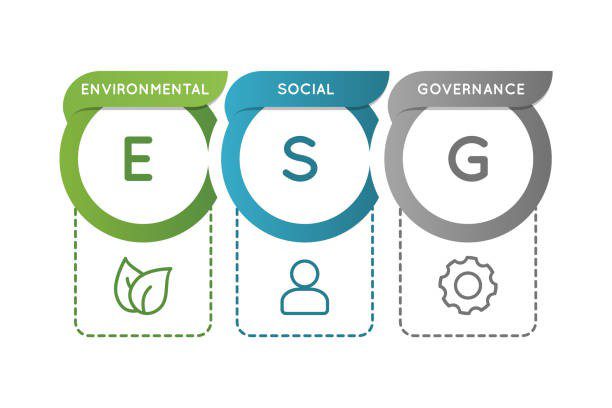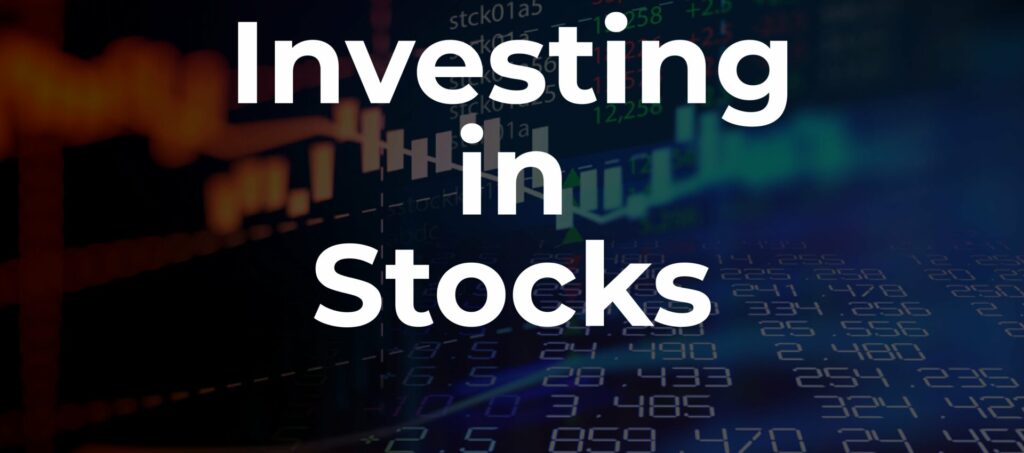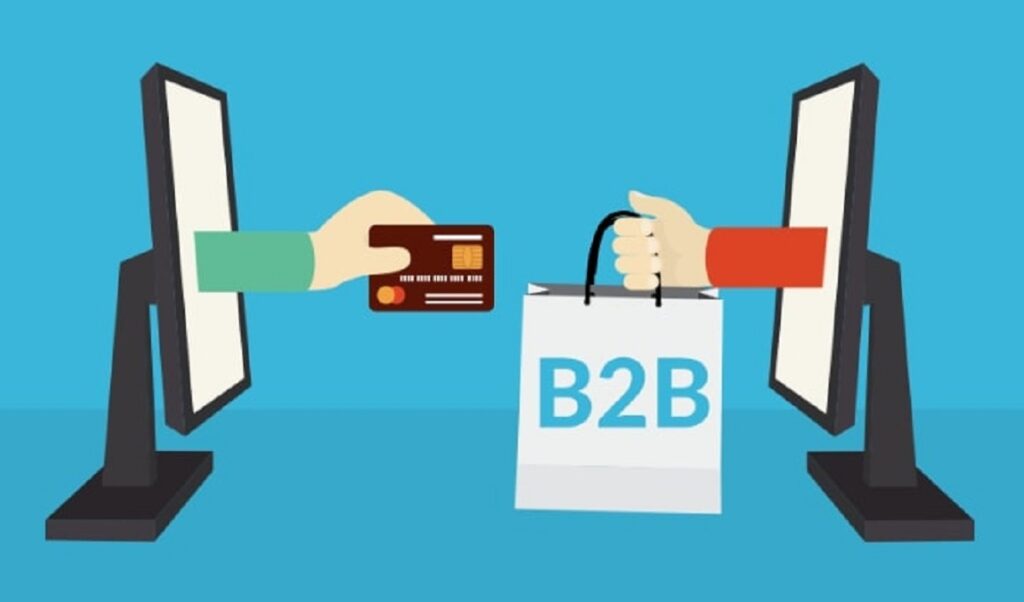Key takeaways
- Investing can be a way to take control of your financial future and grow your wealth over time.
- You can build a better financial future in 2025 by focusing on retirement accounts and investment funds, balancing long- and short-term investments and continuing to learn.
- Your financial journey can start with as little as $1. Saving early and often can have a bigger impact than how much you save initially thanks to compound interest.
Investing in the financial markets might sound like one of the scariest parts of managing your finances, but it’s also potentially the most rewarding. While major declines in the market can be frightening, investing is one of the few ways to outpace inflation and grow your purchasing power over time. A savings account just won’t build wealth.
That makes investing one of the best things that Americans of any age can do to get on the road toward financial well-being.
With all the optimism surrounding the new year, here’s how you can start investing in 2025 and enjoy the returns that can build you a better financial future.
How to start investing: 6 ways to take action
1. Look into retirement accounts
For many people, the best place to begin is your employer-sponsored retirement plan – likely a 401(k) – offered through your employer’s benefits package.
In a 401(k) plan, the money you contribute each paycheck will grow tax-free until you begin withdrawals upon reaching retirement age. Many employers even offer matching contributions up to a certain percentage for employees who participate in their sponsored plans.
These plans have other benefits, too, depending on which type of 401(k) plan you choose:
- A traditional 401(k) allows you to deduct your contributions from your paycheck so that you don’t pay taxes on it today, only when you withdraw the money later.
- A Roth 401(k) allows you to withdraw your money tax-free – after years of gains – but you have to pay tax on contributions.
The logistics of a 401(k) can be confusing, especially for recent grads or those who have never contributed. Look to your employer for guidance. Your plan’s administrator – which is sometimes a big broker such as Fidelity, Charles Schwab or Vanguard – may offer tools and planning resources, helping you educate yourself on good investing practices and the options available in the 401(k) plan.
If your employer doesn’t offer a 401(k) plan, you’re a non-traditional worker, or you simply want to contribute more, consider opening a traditional IRA or Roth IRA.
- A traditional IRA is similar to a 401(k): You put money in pre-tax, let it grow over time and pay taxes when you withdraw it in retirement.
- With a Roth IRA, on the other hand, you invest after-tax income and then the money grows tax-free and is not taxed upon withdrawal.
There are also specialized retirement accounts for self-employed workers. The IRS limits the amount you can add to each of these accounts annually, so be sure to stay within these rules:
- For 2025, the contribution limit is set at $23,500 for 401(k) accounts (before employer match) and $7,000 for an IRA.
- Older workers (those over age 50) can add an another $7,500 to a 401(k) as a catch-up contribution, while an IRA allows an additional $1,000 contribution.
2. Use investment funds to reduce risk
Risk tolerance is one of the first things you should consider when you start investing. When markets decline as they did in 2022, many investors flee. But long-term investors often see such downturns as a chance to buy stocks at a discounted price.
Investors who can weather such downturns may enjoy the market’s average annual return – about 10 percent historically. But you have to be able to stay in the market when things get rough.
To reduce your risk as a long-term investor, it all comes down to diversification. You can be more aggressive in your allocation to stocks when you’re young and your withdrawal date is distant.
As you inch closer to retirement or the date you’re looking to withdraw from your accounts, start scaling back your risk. Your diversification should grow more conservative over time so you don’t risk major losses in a market downturn.
Investors can reduce risk and get a diversified portfolio quickly and easily with these two investment options.
- Index fund: Instead of trying to actively pick stocks, an index fund passively owns all the stocks in an index. By owning a wide swath of companies, investors avoid the risk of investing in one or two individual stocks, though they won’t eliminate all the risk that comes from stock investing. Index funds are a staple choice in 401(k) plans, so you should have no trouble finding one in yours.
- Target-date fund: These “set it and forget it” funds automatically adjust your assets to a more conservative mix as you approach retirement. Typically, target-date funds move from a higher concentration of stocks to a more bond-focused portfolio as you approach your date.
3. Understand your investment options
A brokerage account gives you many new investment opportunities, including these assets.
| Investment Option | What It Is | Pros | Cons | Best For |
|---|---|---|---|---|
| Stocks | Ownership stake in a company | – High long-term return potential – Builds wealth and beats inflation – Can earn dividends | – Highly volatile in short term – Requires patience and risk tolerance – Needs research/monitoring | Long-term investors seeking growth |
| Bonds | Loan to government/corporation with fixed interest | – Steady income stream – Less volatile than stocks – Good for capital preservation | – Lower returns vs. stocks – Sensitive to interest rate changes – Inflation may reduce real value | Conservative investors, retirees, income-seekers |
| Mutual Funds | Professionally managed pool of investments | – Diversification reduces risk – Professional management – Accessible for beginners | – Higher fees than ETFs – Less trading flexibility – Performance depends on fund manager | Beginners & hands-off investors |
| ETFs | Exchange-traded funds holding diversified assets | – Low fees (cost-effective) – Diversified like mutual funds – Can be traded like stocks | – Prices fluctuate during trading day – Some complex ETFs are risky – Brokerage fees (in some cases) | Cost-conscious investors, DIY investors |
4. Balance long-term and short-term investments
Your time frame can change which types of accounts and investments are most effective for you.
- Short-term investments: If you’re focusing on short-term investments – those you can access within the next five years – money market accounts, high-yield savings accounts and certificates of deposit will be the most useful. These accounts are insured by the FDIC, so your money is going to be there when you need it. Your return won’t usually be as high as long-term investments, but it’s safer in the short term.
- Long-term investments: The stock market is an ideal vehicle for long-term investments, however, and can bring you great returns over time. Whether you’re saving for retirement, looking to buy a house in 10 years or preparing to pay your child’s college tuition, you have a variety of options – index funds, mutual funds and exchange-traded funds all offer stocks, bonds or both.
Getting started is easier than ever with the rise of online brokerage accounts designed to fit your personal needs. It’s never been cheaper to invest in stocks or funds, with brokers slashing commissions to zero and fund companies continuing to cut their management fees. You can even hire a robo-advisor for a very reasonable fee to pick the investments for you.
5. Don’t fall for easy mistakes
The first common mistake new investors make is being too involved. Research shows that passive funds outperform actively traded funds. Your money will grow more and you’ll have peace of mind if you keep yourself from checking (or changing) your accounts more than a few times each year.
Another danger is failing to use your accounts as they’re intended. Retirement accounts such as 401(k) and IRAs offer tax and investing advantages but specifically for retirement. Use them for almost anything else, and you’re likely to get stuck with taxes and an additional penalty.
While you may be allowed to take out a loan from your 401(k), not only do you lose the gains that money could be earning, but you also must pay the loan back within five years (unless it’s used to purchase a home) or you’ll pay a 10 percent penalty on the outstanding balance. There are some exceptions to the 10 percent penalty, however.
Your retirement account is meant to be used for retirement, so if you’re using it for another purpose, you’ll want to stop and ask yourself whether that expense is truly necessary.
6. Keep learning and saving
The good news is you’re already working on one of the best ways to get started: educating yourself. Take in all the reputable information you can find about investing, including books, online articles, experts on social media and even YouTube videos. There are great resources available to help you find the investing strategy and philosophy that’s right for you.
You can also seek out a financial advisor who will work with you to set financial goals and personalize your journey. As you search for an advisor, you want to look for one who is looking out for your best interest. Ask them questions about their recommendations, confirm that they are a fiduciary acting in your best interest and make sure you understand their payment plan, so you’re not hit by any hidden fees.
Generally, you’re going to have the least conflicts of interest from a fee-only fiduciary – one whom you pay, rather than being paid by the big financial companies.
Why investing is so important
Investing is the most effective way Americans can build their wealth and save for long-term goals like retirement. Or paying for college. Or buying a house. And the list goes on.
The sooner you begin investing, the sooner you can take advantage of compounding gains, allowing the money you put into your account to grow more rapidly over time. Compounding occurs when you earn profits on your investments, and then those profits are also used to earn more profits.
Think of compounding like a snowball rolling down a hill. As the snowball rolls, it collects more snow and gets larger. Likewise, just $1,000 invested in the S&P 500 — which historically averages 10 percent annual returns — could grow to more than $45,000 over 40 years.
In other words, your money earns more money over time — without you doing anything. You’re looking for your investments to grow enough to not only keep up with inflation, but to actually outpace it, to ensure your future financial security. If your gains exceed inflation, you’ll increase your purchasing power over time.
How much money do I need to start investing?
There’s no minimum when it comes to getting started with investing. You can begin your journey with any amount, even as little as $1, thanks to low or no-minimum brokerage accounts and the availability of fractional shares. However, before you start investing, it’s crucial to evaluate your financial situation, establish a solid emergency fund, and ensure your debt is manageable.
When it comes to retirement, the recommendation is to start as early as possible, even if it’s with small amounts, and aim to save around 10 percent to 15 percent of your income. For non-retirement investments, ensure you’re in a stable financial position and ready to handle the inherent risks of investing.
FAQs
1. How much money do I need to start investing?
You can start investing with as little as $1, thanks to brokerage accounts that allow fractional shares. While there’s no strict minimum, it’s best to have an emergency fund and manageable debt before you begin.
2. Is it better to invest in a 401(k), IRA, or brokerage account first?
If your employer offers a 401(k) with matching contributions, that’s usually the best place to start. After that, consider an IRA for additional retirement savings. A brokerage account is best for non-retirement investing goals.
3. What’s the difference between a traditional and Roth account?
- Traditional 401(k)/IRA: Contributions are pre-tax, and you’ll pay taxes when you withdraw in retirement.
- Roth 401(k)/IRA: Contributions are made with after-tax money, but withdrawals (including gains) are tax-free in retirement.
4. Are stocks too risky for beginners?
Stocks can be volatile in the short term but offer high returns in the long term. Beginners can reduce risk by investing in index funds, ETFs, or mutual funds rather than picking individual stocks.
5. What’s the safest investment option for the short term?
For short-term goals (under 5 years), consider money market accounts, high-yield savings accounts, or certificates of deposit (CDs). These are FDIC-insured and carry less risk.
6. How do I choose between mutual funds and ETFs?
Both provide diversification. Mutual funds are professionally managed but usually come with higher fees. ETFs typically have lower costs and can be traded like stocks during the day.
7. What is compounding and why does it matter?
Compounding occurs when your investment earnings generate more earnings over time. The earlier you start investing, the more you benefit from compounding growth.
8. Should I hire a financial advisor to start investing?
Not necessarily. Many beginners start with online brokers or robo-advisors. If you want personalized guidance, look for a fee-only fiduciary who acts in your best interest.
9. How can I avoid common investing mistakes?
Don’t panic-sell during market downturns, avoid trying to time the market, and use retirement accounts for their intended purpose. Focus on long-term growth and consistency.
10. Is now (2025) a good time to start investing?
Yes. The best time to invest is as early as possible. Even with market ups and downs, staying invested long-term has historically delivered solid returns.
Conclusion
Investing doesn’t have to be complicated. By starting small, focusing on your goals, and choosing the right mix of stocks, bonds, mutual funds, or ETFs, you can build long-term wealth with confidence. Remember, consistency matters more than timing the market—so the best step you can take is to get started today and let compounding work in your favor.










